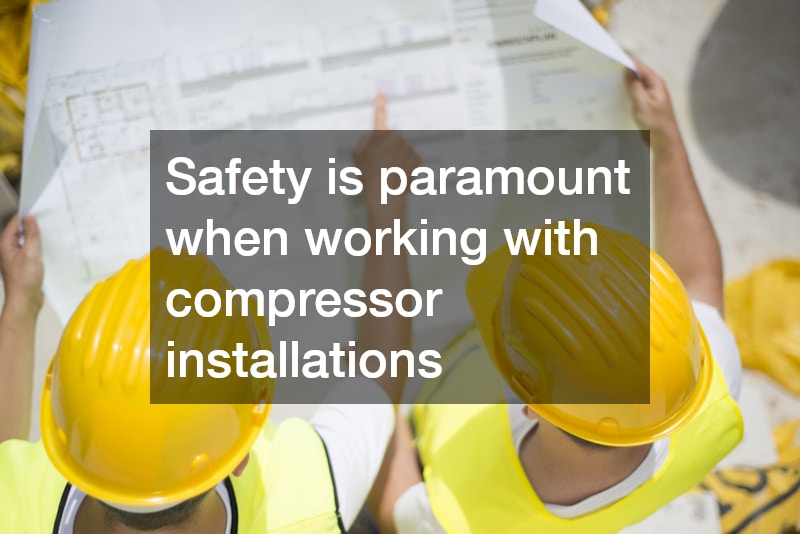In this guide, we will explore the essential aspects of using a compressor installer. This will include understanding what a compressor installer is, how to use it, and the common problems you might encounter. Whether you’re a beginner or someone looking to brush up on your knowledge, this guide will provide valuable insights.
What is a Compressor Installer and How Does It Work?
A compressor is a mechanical device that increases the pressure of a gas by reducing its volume. They are used in various industries for applications such as refrigeration, gas compression, and air tools operation. Compressors are broadly categorized into types like reciprocating, rotary screw, and centrifugal compressors, each serving specific functional requirements.
The main purpose of a compressor is to pressurize gas to power equipment or enable processes like cooling in refrigeration systems. Innovations in compressor technology have led to the development of energy-efficient models with enhanced performance capabilities. With a wide range of compressors available, selecting the right one depends on specific application needs and system compatibility.
A compressor installer plays a crucial role in the seamless installation of compressors, ensuring they are set up correctly and efficiently. It simplifies the installation process by providing the necessary tools and guidelines for setting up the compressor. This not only improves the installer’s efficiency but also helps prevent potential issues that might arise from improper installation.
Typically, a compressor installer is designed to cater to the specific needs of various compressor systems, adapting to different installation environments. It ensures that the components of the compressor are securely and correctly positioned. The use of a compressor installer can greatly reduce the risk of errors during the installation, which can otherwise lead to performance issues or equipment failure.
Compressor installations involve several essential components, each playing a vital role in ensuring the system operates efficiently. These include the compressor unit, pipework for air flow management, and control systems for regulating operations. Proper installation of these components ensures optimal performance and system reliability.
How to Effectively Use a Compressor Installer?
Installing a compressor using an installer requires a systematic approach to ensure successful and efficient outcomes. Begin by reviewing the user manual and gathering all necessary tools and equipment to prevent interruptions during installation. Position the compressor on a stable surface and ensure it is adequately leveled to prevent vibrations during operation.
Next, connect the pipework according to the specifications provided, ensuring that all joints are securely fastened and leak-free. Proceed to install the control systems, calibrating them according to the manufacturer’s guidelines for optimal performance. Double-check all electrical connections, ensuring they are safely insulated and comply with local safety standards.
Safety is paramount when working with compressor installations, given the high pressures and the potential risks involved. Always wear appropriate personal protective equipment (PPE) such as gloves, goggles, and ear protection when operating or installing compressors. Ensure that the installation area is clear of any debris or hazards that might interfere with the installation process.
Before starting, check all equipment for signs of wear or damage that could compromise safety. Verify that all tools and instruments used for installation are in good working condition and properly calibrated. It’s important to adhere to all safety guidelines provided in the manufacturer’s manual and local safety regulations to prevent accidents and ensure a safe working environment.
Despite thorough planning, installation issues can sometimes arise, requiring prompt troubleshooting to keep the compressor operational. A common problem is air leaks, which can be identified using a soapy water test on connections and seals—bubbles indicate leaks that need tightening or re-sealing. Another frequent issue is improper alignment, leading to increased wear and reduced efficiency; ensure all components are aligned as per specifications.
What are the Benefits of Using a Compressor Installer?
Using a compressor installer significantly speeds up the installation process, allowing for efficient setup and minimal downtime. The precise guidance and tools provided by the installer minimize chances of error, reducing the need for rework and associated time lags. As a result, users experience faster operational readiness and smoother integration into existing systems.
The streamlined process offered by compressor installers is particularly beneficial in commercial settings, where installation delays can lead to lost productivity and revenue. By expediting installation times, businesses can maintain workflow continuity and meet production targets more effectively. Efficient installations also contribute to employee satisfaction by minimizing stress and confusion during implementation.
Overall, the time-saving aspects of using a compressor installer facilitate more streamlined project management. This efficiency translates into tangible economic benefits, particularly in industries with demanding operational timelines. By reducing the complexity and duration of the installation process, organizations can focus more on their core operations and strategic initiatives.
Proper installation using a compressor installer ensures that the compressor operates at its full potential with improved efficiency. A well-installed compressor results in optimized performance, less energy consumption, and a reduced likelihood of operational hiccups. Moreover, compressors installed correctly tend to have a longer operational life, often resulting in lower maintenance costs over time.
The correct use of a compressor installer helps in aligning system components accurately, thereby reducing wear and tear caused by misalignments or improper connections. This precision enhances the overall endurance of the compressor, ensuring that it continues to function smoothly even under demanding conditions. By maintaining peak performance, businesses can leverage their investments in compressors, achieving reliability and predictability in operational outcomes.
Using a compressor installer effectively involves understanding the tools, following a systematic installation process, and recognizing the benefits. By considering the points outlined in this guide, you can ensure a smooth and successful compressor installation experience. Whether it’s achieving operational efficiency, ensuring safety, or realizing cost savings, incorporating a compressor installer is a step towards optimizing your setup for enhanced performance and reliability.




